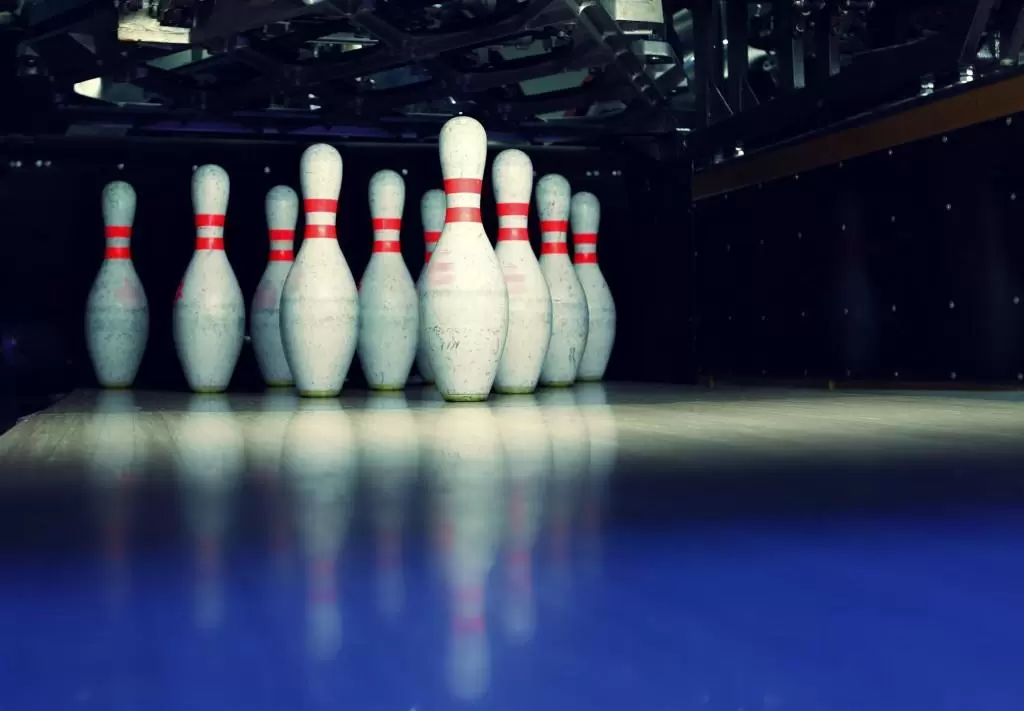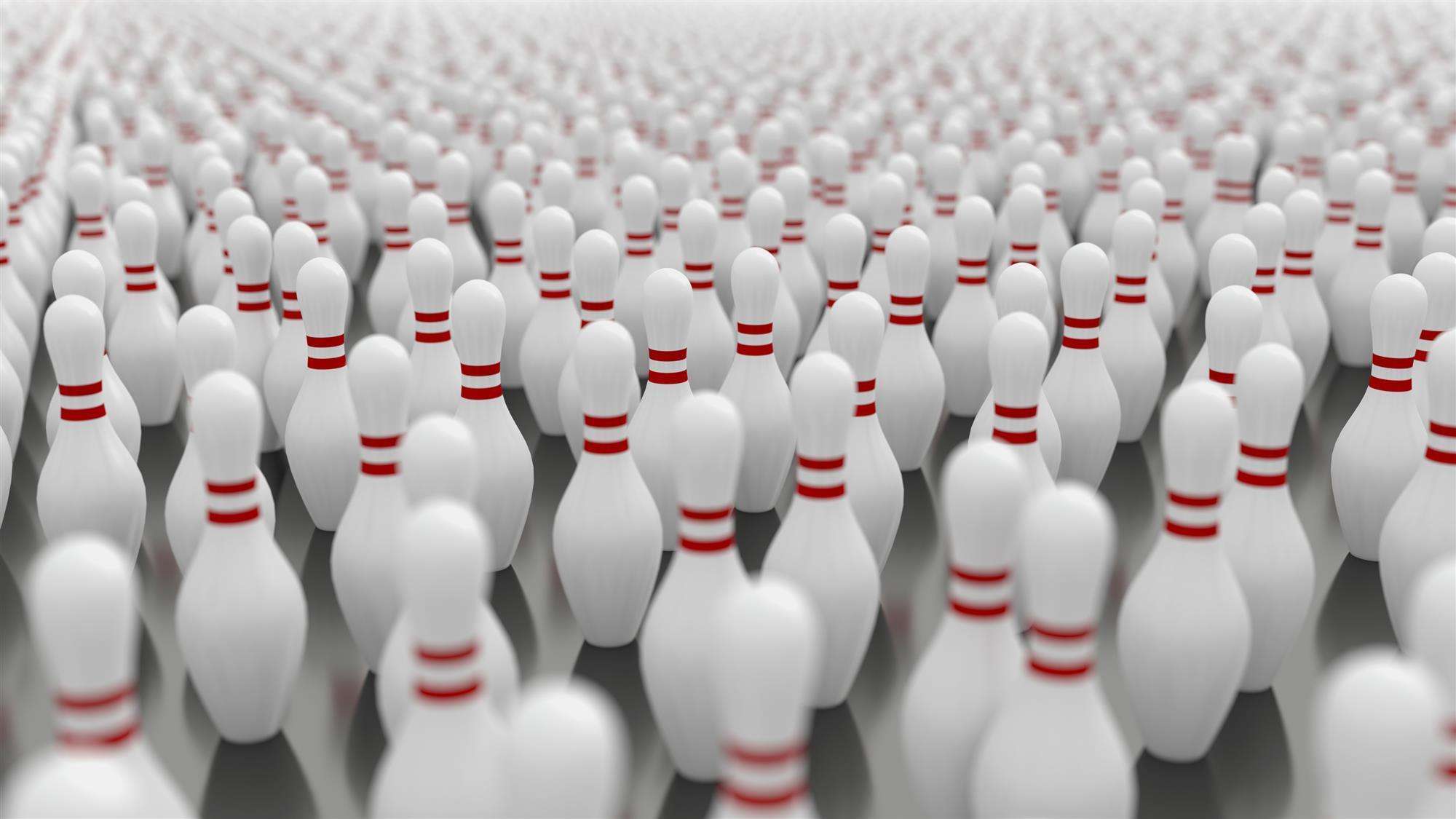Do you know what bowling pins are made of? If you were to ask a large number of people of varying ages, the responses you would get would be interesting, as many people are not entirely sure, so they guess a wide range of hard materials, including:
- Plastics
- Metals
- Stone
- Aluminum
- Wood
- Latex
- Acrylic
Even with all of the latest advancements in technology and experimenting with several of the above materials, the construction process of bowling pins has not changed over 60 years! Originally, way back in the late 1800s, bowling pins were made out of solid pieces of maple wood. However, with the invention of the pin setter in the 1940s, the solid pins were easily damaged and cracked and required more frequent replacement.
The solution to this problem was developed by Vulcan Manufacturing in the 1950s, using smaller pieces of maple and gluing them together. This made it possible to control the weight of the pin, while at the same time still create strong pins to withstand the impact of bowling balls and being tumbled about in a pin setter.
Around this same time, special coatings were invented and were starting to be applied to solid pins. However, the problem with the coatings was that they increased the weight of the pin and affected people’s scoring and games.
The solution was simple enough, and that was to use Vulcan’s new pin since the weight could be adjusted, and apply the coatings over that type of pin design. As a result, the modern bowling pin was born and, by the early 1960s, all solid wood pins had stopped being used.

The construction of modern bowling pins is regulated by the ABC (American Bowling Congress) and the WIBC (Women’s International Bowling Congress). These regulations require that the maple wood used in the pins be harvested from trees grown above the 45th parallel! This is because trees grown in this region have a lower mineral concentration, which results in a denser wood.
The two current coatings used to protect the wood and give the pin its white appearance are nylon and Surlyn. The coating processes used on the pins depends upon which coating is being applied. For instance, with nylon coatings, the pin must first be sealed in latex to ensure the nylon adheres correctly and to prevent it from cracking.
After the coating is applied, there are specific finishing processes used. The surface is first sanded to remove excess coating. Then, silk screen graphics are sprayed onto the pin, like the approval stamp, ring around the neck, the manufacturer’s logo, and so on. Last, a clear gloss coat is sprayed over the pin, and the pin skirt is glued onto the bottom of the pin. On average, most pins will last up to a year, but they do need to be recoated after about six months.
To find bowling pins and bowling equipment for sale for your bowling center, you have to look no further than Murrey Bowling. Contact us at (310) 532-6091 for more information today!
Source


